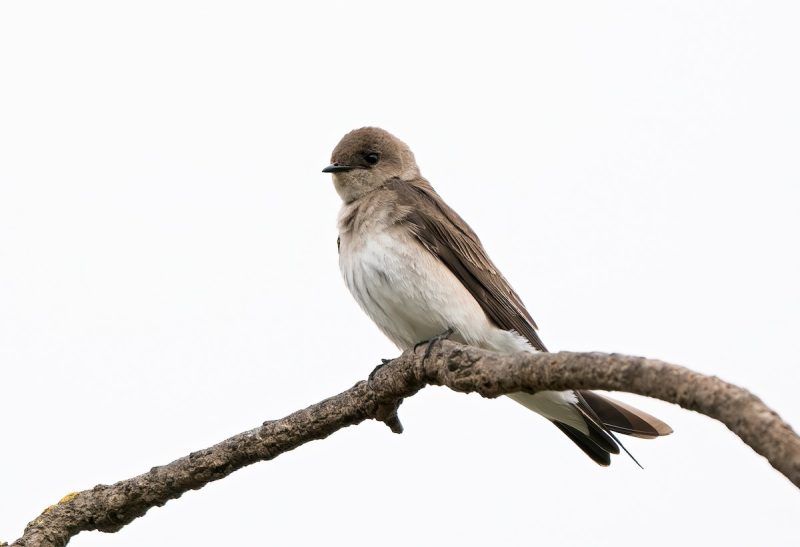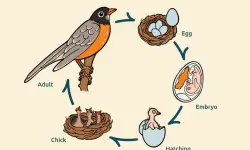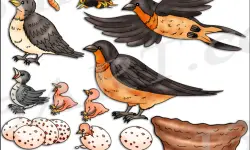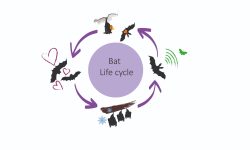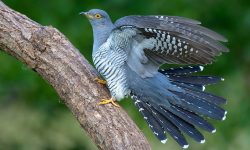Every spring and summer, Michigan’s skies come alive with the elegant flight of swallows. These sleek, agile birds arrive from their wintering grounds to nest, feed, and raise their young in open fields, wetlands, and human structures across the state. Their presence is a hallmark of warm weather, their silhouettes and chirping calls a familiar and welcome sign of the season. In this guide, we explore seven swallow species that bring color, grace, and energy to Michigan’s summer skies.
1. Barn Swallow (Hirundo rustica)
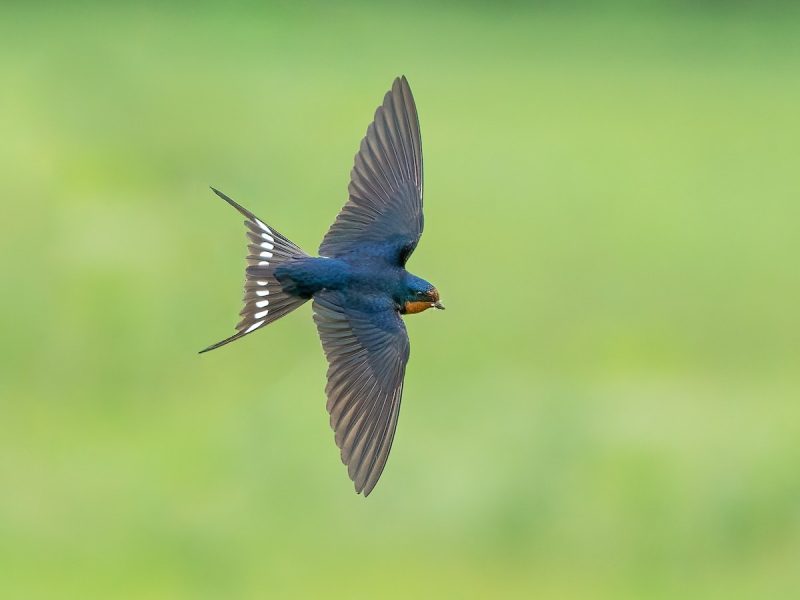
A Flash of Blue Over the Fields
Graceful and unmistakable, the Barn Swallow is summer’s sky-bound dancer in Michigan’s farmlands and meadows. With shimmering blue backs, cinnamon-colored underparts, and dramatically forked tails that stream behind them like ribbons, these birds are a familiar sight darting just above the grasses.
They make their homes close to ours—nesting beneath barn rafters, under bridges, and along porch eaves. Using beakfuls of mud, they sculpt delicate cup-shaped nests that cling to walls and beams, generation after generation. Their aerial acrobatics are matched only by their long-distance stamina: Barn Swallows migrate thousands of miles each year, wintering in South America and returning to Michigan by April, where they fill the air with cheerful chirps and sweeping dives. Their return marks the true arrival of spring across the state.
2. Tree Swallow (Tachycineta bicolor)
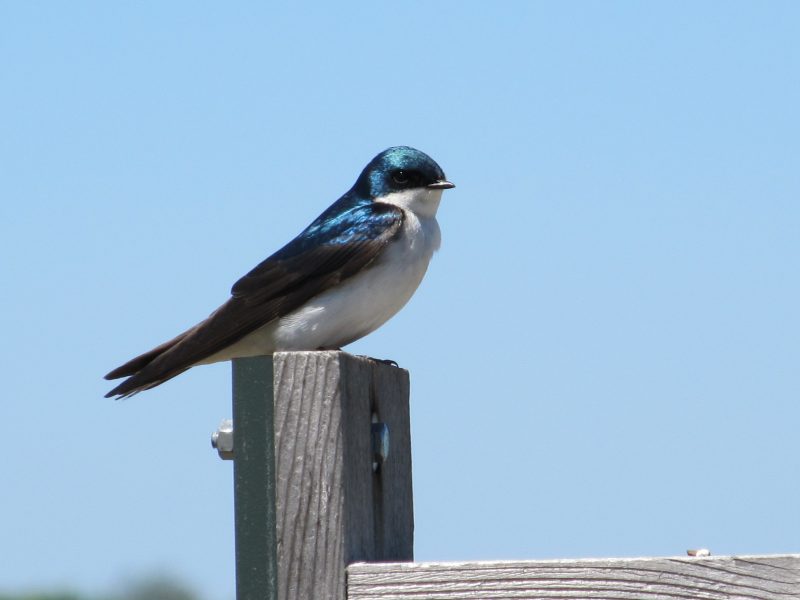
A Glint of Sky in Feathers
As one of the earliest signs of spring, the Tree Swallow streaks back into Michigan skies like a living shard of sunlight. Its iridescent blue-green back glistens in the light, shimmering like polished glass as it twists and dives through the air. Paired with clean white underparts and a sleek, tapered body, this bird is built for beauty and speed.
Tree Swallows favor open landscapes near water, where they nest in old woodpecker holes or, more commonly now, in nest boxes provided by humans. Their readiness to embrace artificial homes has made them beloved companions of backyard birders and wetland stewards. In warmer months, they feast on flying insects, plucking midges and mosquitoes mid-air. But as the season cools, their menu shifts to berries, showing a resourcefulness that helps them thrive across Michigan’s varied landscapes.
3. Cliff Swallow (Petrochelidon pyrrhonota)
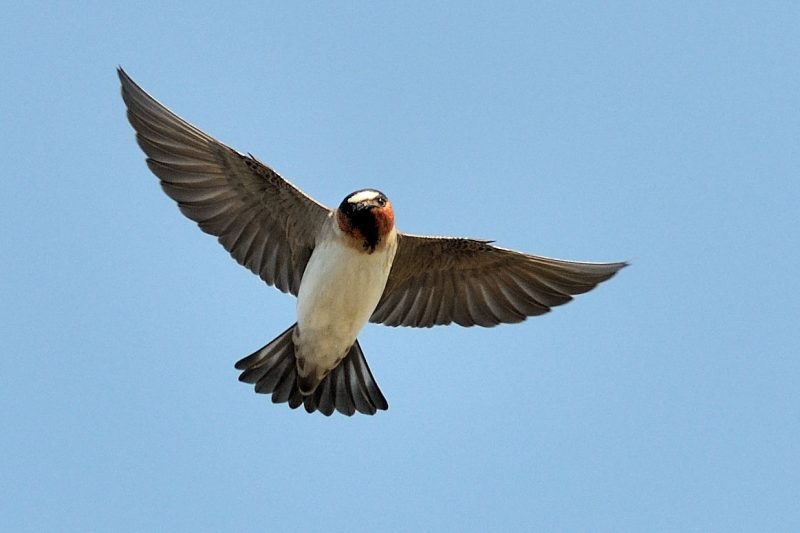
Architects of the Air
Cliff Swallows are nature’s skilled masons, famed for crafting gourd-shaped mud nests that cling in tight clusters to cliffs, overpasses, and the sides of buildings. These intricate mud homes—stacked like clay apartments—are a testament to teamwork, as dozens or even hundreds of pairs build and raise young in bustling colonies.
Easily recognized by their squared tails, creamy foreheads, and rich rusty rumps, Cliff Swallows dart through the air in tight, coordinated flocks, chattering with soft, cheerful calls. Though they are less common in Michigan than Barn or Tree Swallows, their colonial nesting sites are unforgettable. When spotted in full breeding mode, these social birds turn overpasses and cliffsides into lively, chattering cities of swirling wings and rising mud towers.
4. Bank Swallow (Riparia riparia)
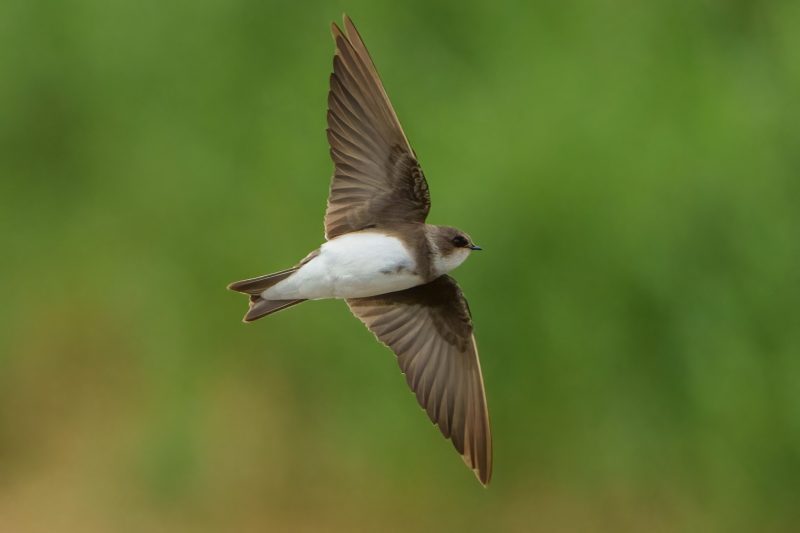
Tunneling Travelers of Riverbanks
Delicate and fast-moving, the Bank Swallow is Michigan’s smallest swallow—but what it lacks in size, it makes up for in tenacity. With brown backs, crisp white underparts, and a sharp, dark breast band, these slender birds are a blur of motion as they sweep low over lakes and rivers in loose, whispering flocks.
True to their name, Bank Swallows are expert diggers. They excavate long, narrow tunnels into sandy bluffs, lakeshores, or gravel pits, carving out nesting chambers in steep earth walls. Arriving by mid-spring, they gather in noisy colonies that ripple with activity as pairs dart in and out of their cliffside burrows. However, these unique homes leave them vulnerable—erosion, construction, and shoreline development have caused their numbers to decline in parts of the state. Spotting one is a reminder of how intimately these birds are tied to Michigan’s wild, shifting watersides.
6. Purple Martin (Progne subis)
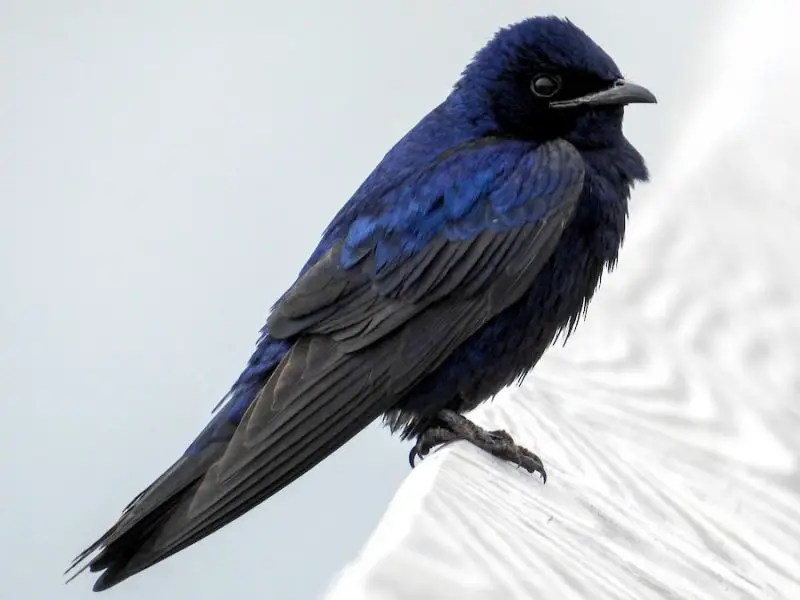
The Regal Performers of Summer Skies
Towering above their swallow cousins in both size and spirit, Purple Martins are Michigan’s largest—and perhaps most beloved—aerial acrobats. Males shimmer in deep, glossy purple-black, catching the sunlight like living amethysts, while females wear softer hues of charcoal and pale gray. These birds are not only striking—they’re deeply social, thriving in vibrant colonies that depend almost entirely on human help.
Unlike other swallows that nest in cliffs or pipes, Purple Martins rely on multi-chambered birdhouses and hanging gourds provided by dedicated landlords. They arrive fashionably late—typically in May—and fill the air with cheerful, gurgling songs as they swoop and spiral high above fields and lakes in pursuit of insects.
Their dependency on people makes them a unique conservation story. As competition from invasive species and habitat loss increase, Purple Martins need human allies more than ever. Offering them housing isn’t just a joy for bird lovers—it’s a partnership in preserving one of summer’s most majestic voices.
7. Cave Swallow (Petrochelidon fulva)
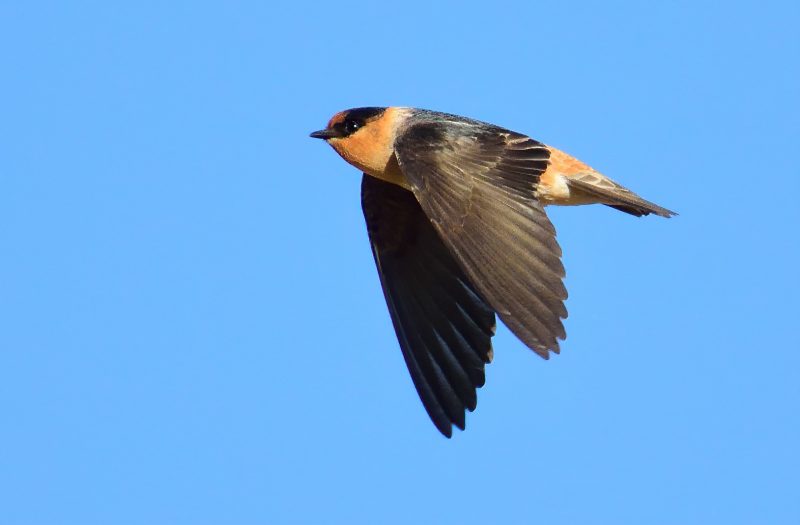
A Southern Stranger at Michigan’s Doorstep
Once limited to the caves and canyons of the American Southwest and the Caribbean, the Cave Swallow is now venturing farther north—and Michigan is beginning to take notice. With pale rumps, warm cinnamon-colored throats, and squared tails, these swallows bring a touch of desert sun to Great Lakes skies.
Though still rare, sightings are becoming more frequent during fall migration, especially along the shores of Lake Erie and Lake Michigan. They often mix with other swallows in roving flocks, their unfamiliar plumage standing out to the keen-eyed birder. Cave Swallows haven’t yet established breeding colonies in the state, but their steady push northward hints that it may only be a matter of time. Each encounter is a reminder of how quickly bird ranges can shift—and how Michigan’s skies remain full of surprise.
Conclusion
Swallows are not just signs of summer—they are vital players in Michigan’s ecosystem. As insectivores, they help control pest populations, and as aerial performers, they inspire awe in anyone who watches the skies. By learning to recognize these seven species, you can deepen your appreciation for the subtle rhythms of the natural world and the winged travelers who bring summer to life in Michigan.

